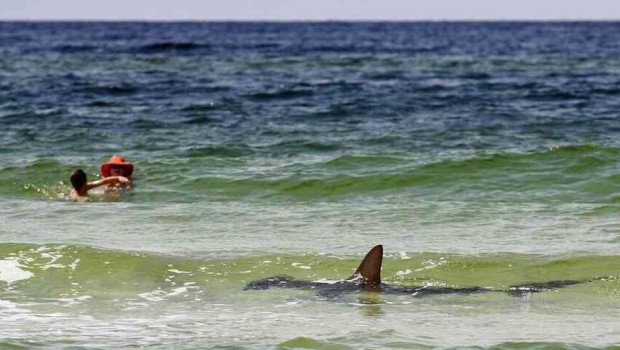Shark Attacks expected to rise this summer
Published on July 2nd, 2014
U.S. beach goers beware: Shark experts predict that there will be more shark attacks this summer than last, affecting the estimated 200 million people who visit American beaches each year.
The predicted rise is due to three primary reasons, according to George Burgess, who is director of the Florida Program for Shark Research.
“Each year, more people are going into the water,” Burgess told Discovery News, explaining that more people inherently leads to greater chances for shark encounters. “We’re also seeing a rise in numbers of sharks on both coasts.”
Shark populations worldwide are under enormous pressure due to overfishing. So what happens to an ecosystem when apex predators like sharks disappear?
The third reason, he said, is that “global climate change has resulted in warmer waters to the north, prompting humans to enter waters earlier in the season, staying in them later” and over an expanded range.
According to the International Shark Attack File, there were 27 shark attacks in U.S. waters last summer. Five of those happened off the shores of Hawaii, with one of the attacks causing a fatality.
Both people and great white sharks love Hawaiian waters, not to mention other U.S. coastal waters. Burgess and his colleagues recently conducted a survey of great white shark populations and found that they are growing.
This is actually good news, because apex predators like great whites signal how the rest of the marine ecosystem is doing.
“If something is wrong with the largest, most powerful group in the sea, then something is wrong with the sea, so it’s a relief to find they’re in good shape,” Burgess said, crediting U.S. regulatory agencies and their conservation measures for the shark population uptick.
Heidi Dewar, a National Marine Fisheries Service research biologist, added, “We determined there were enough animals that there was a low to very low risk of extinction and, in fact, most developments suggest an increasing population.”
Burgess shared that blacktip and spinner sharks are also “doing quite well” with numbers showing that their populations “are reasonably healthy.”
These sharks aren’t seeking out human prey. Like all animals, they become accustomed to a particular diet. In their case, it typically includes fish, seals, sea lions and other marine mammals.
When visibility is poor, however, and someone is out splashing and kicking, it’s not hard to see how a hungry shark could become confused.
“Remember that when you’re in the water off of beaches you are entering a sea wilderness experience,” Burgess said. “Sharks are out there making a living.”
He said that there are simple things beach goers can do to reduce their chances of experiencing a shark attack.
“Stay in groups,” he advised. “Sharks look for solitary prey. Also, stay out of the water between dusk and dawn, when sharks are most active. Go for a sunset walk on the beach and not a swim.”
He continued that people should avoid entering waters around sandbars, steep drop-offs, estuary inlets, river mouths and lagoons. Fish tend to concentrate in these areas, drawing sharks like a loud dinner bell.
Finally, be careful what you wear. Specifically, avoid wearing shiny jewelry at the beach.
Metal and certain other jewelry can reflect up to 99 percent of the light that it receives. The sheen, Burgess explained, can look like shining fish scales, making the wearer look like a giant fish to sharks on the prowl.
Source: Discovery News









 We’ll keep your information safe.
We’ll keep your information safe.